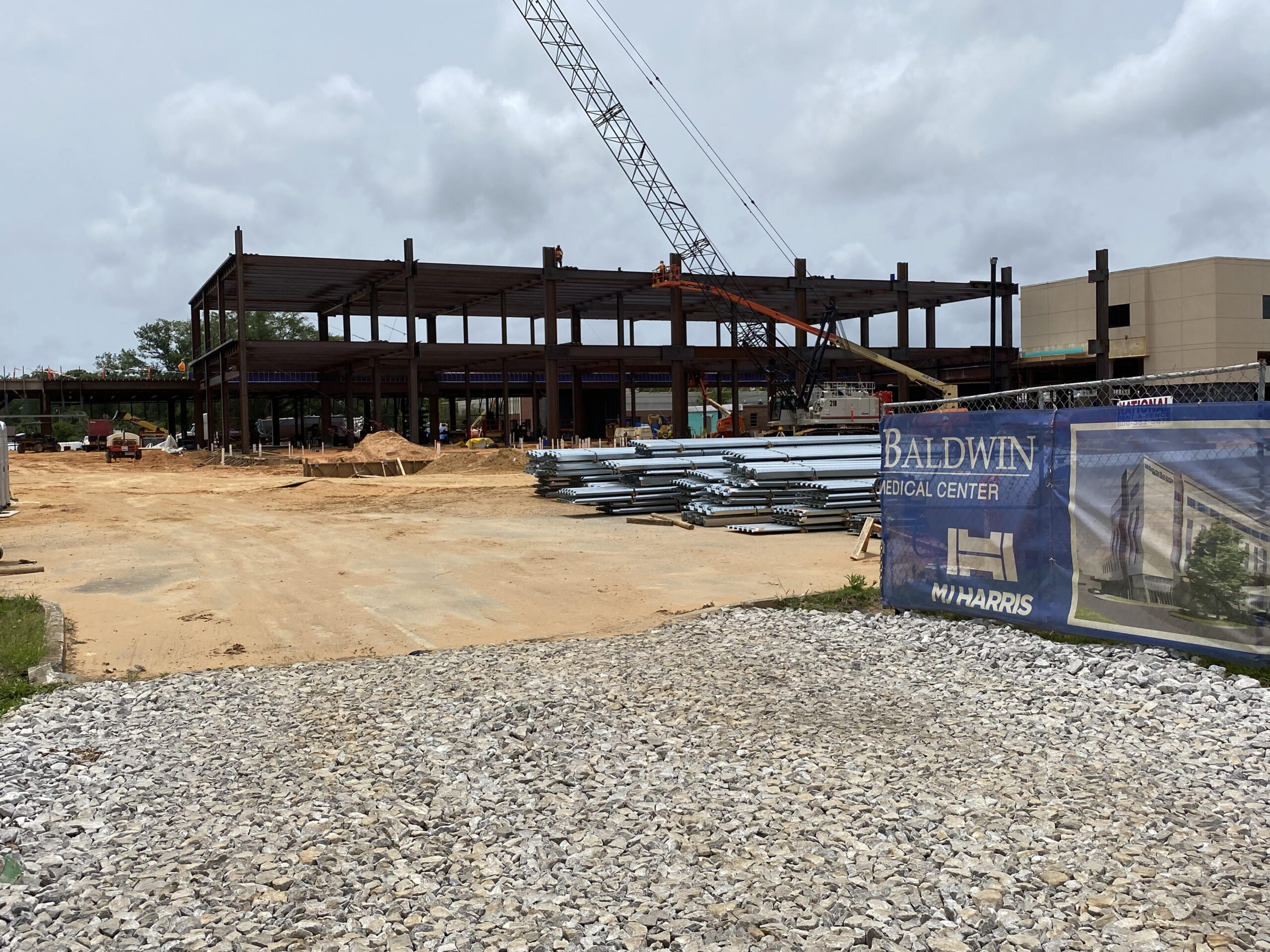FOLEY – A medical overlay district could encourage the expansion of medical services to meet the needs of a growing population while protecting surrounding neighborhoods.
Foley officials are studying the creation of an overlay district in the area of South Baldwin Regional Medical Center in the northern area of the city.
The hospital is currently undergoing a $200-million expansion that will increase the facility’s capacity to 142 beds. Wayne Dyess, executive director of planning and infrastructure, said the expansion is a good time to look at encouraging the development of medical facilities in the area.
“We were looking for ways to encourage a conglomeration of medical uses near the hospital, to get the synergies between the new hospital and potential growth and the need for medical care,” Dyess said. “This is a way that we are looking to try to incentivise this.”
Dyess said the process is still in the planning stages. He said city officials have met with developers and members of the Baldwin County Economic Development Alliance to discuss the proposal.
“We’re working with the EDA, looking for ways to incentivize additional and more diverse health-care resources here as we’ve got a growing population,” Dyess said. “Even things like assisted living, those kinds of things, would be appropriate as well.”
He said the creation of the district would not change any existing zoning in the city.
“Our vision for the medical overlay district is predominantly uses such as hospital support, clinics, therapy facilities, and other directly related health care facilities; but to also include ancillary medical uses such as residential care facilities, and assisted living facilities,” Dyess said. “One could also find other auxiliary uses such as food, coffee shops, temporary style occupancy for healthcare employment such as traveling nurses. In the medical overlay concept the hospital essentially acts as the “anchor” similar to big box retail serving as the economic engine for surrounding smaller businesses.”
The hospital, which opened at the site in 1958, is located near residential areas. Dyess said a medical overlay district could offer a buffer to the expansion of medical offices into neighborhoods.



